Sea stars (starfish) are a vital keystone species in the tidal ecosystem because they are voracious predators, keeping a balance in the ocean food chain by eating mussels, clams and oysters near the shore of the Pacific.
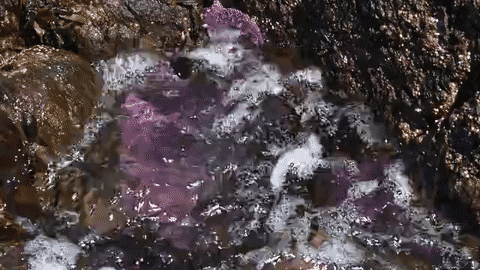
Pisaster sea stars along the North Pacific coast experienced a massive die-off in 2013-14 due to a mysterious disease called sea star wasting syndrome, which has persisted at low levels in most areas and continues to kill sea stars. Where there used to be abundant starfish in the tidepools and clinging to pier pilings, now there are overgrown populations of mussels.
Articles about sea star wasting disease:
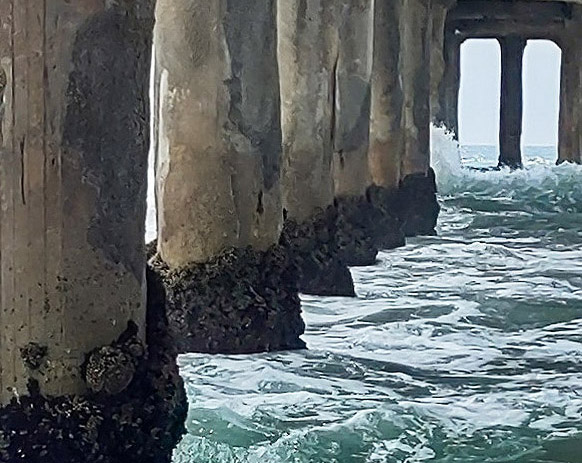
We're asking for help from citizen scientists and ocean lovers along the Pacific coastline to go to the piers and local tidepools within about an hour of the lowest tide, take a photo, and email it to us along with your notes about any sea stars you spot. Simple!
See examples by clicking on the points marked on this map.
Collecting location data will help to identify environmental conditions in which sea stars can best survive and reproduce.
We're looking for intertidal Pisaster ochraceus sea stars (starfish), which are the orange or purple starfish in tidepools and structures in 0-5 feet of water, and often out of the water at low tide. They used to be found on almost all lower pier pilings, and even on the beaches along most of the Pacific coastline. We would expect to see them in places where barnacles and mussels thrive. We want to survey every pier and as many tide pools as possible.
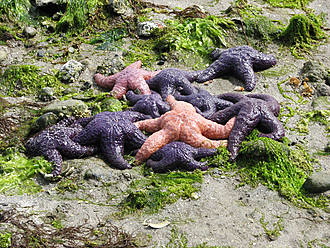
Hopefully of starfish, but we want to see photos of the lower pilings of piers, wharfs and marinas where starfish normally hang out. Your photo documents the absence or presence of starfish in that specific location.
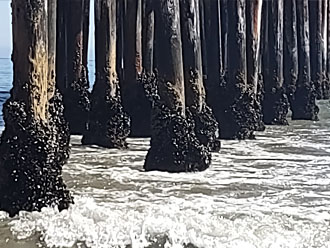
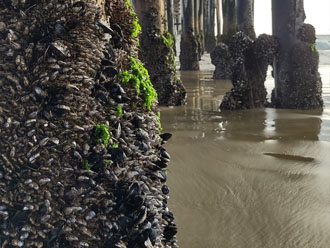
Ideally within a couple hours of the lowest tide of the day. See the tide table on this page for approximae times, or you can go to tidespro.com for your specific times. (Anytime is fine— especially if you're willing to get a little bit wet— but at low tides you can see the tide pools in rocky areas, and the lower parts of the pier are exposed.) PLEASE BE CAREFUL taking photos! The ocean can be unpredictable.
Be sure to let us know the day and place you took the photo, and whether you see any sea stars or overgrowth of mussels and barnacles.
Identifying locations where sea stars continue to live and reproduce can provide clues to environmental factors and chemistry that may cause or affect sea star wasting. Understanding the source of the problem is how we can begin to fix it.
Collecting more data and recruiting additional expertise will help us to better understand the ideal environmental conditions for sea star reproduction. The more we know the more effectively we can make plans to attempt to restore the sea star population on the Pacific Coast.
NORTH COAST TIDES
CENTRAL COAST TIDES
SOUTH COAST TIDES
Gotta wait? Try a puzzle!